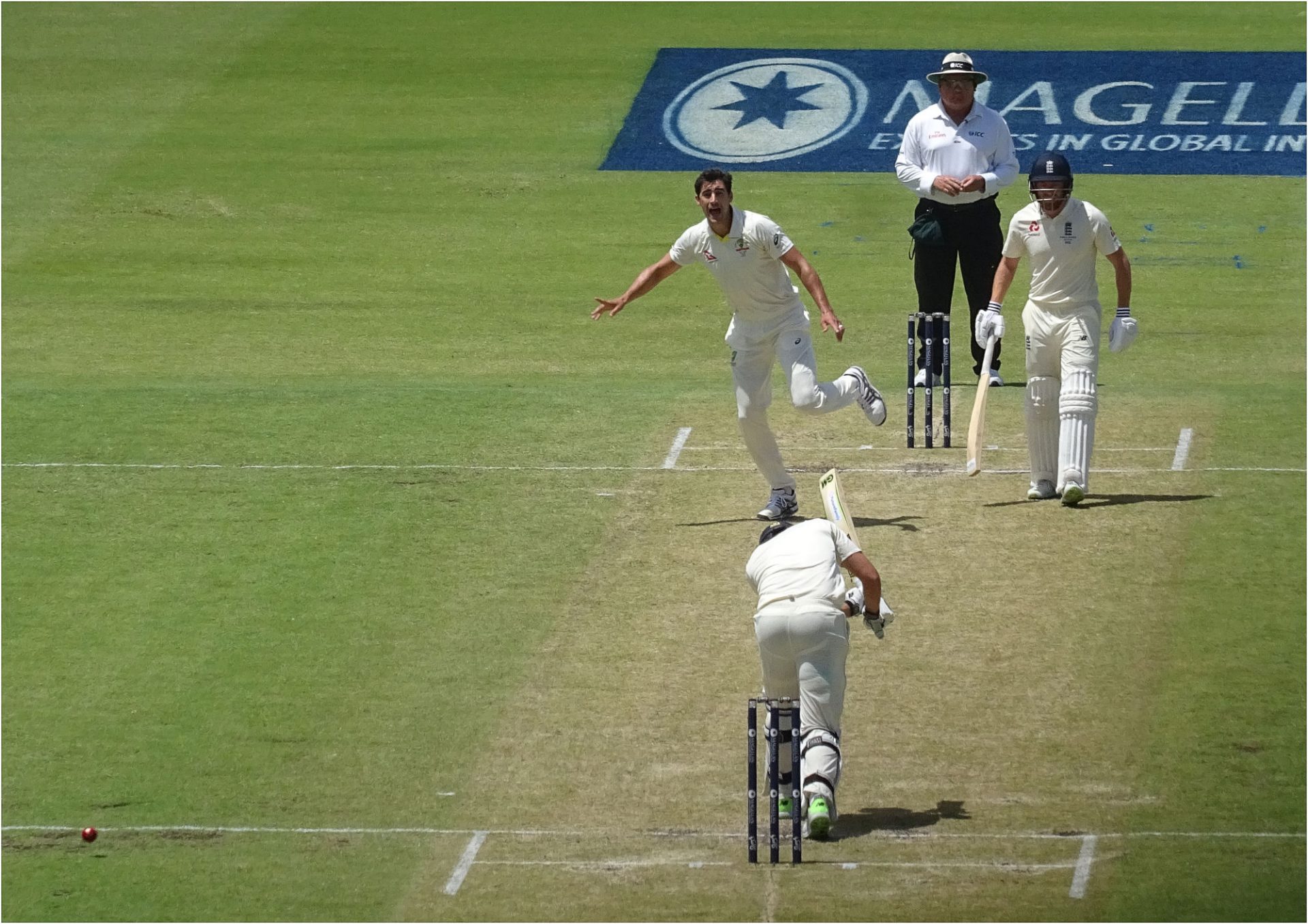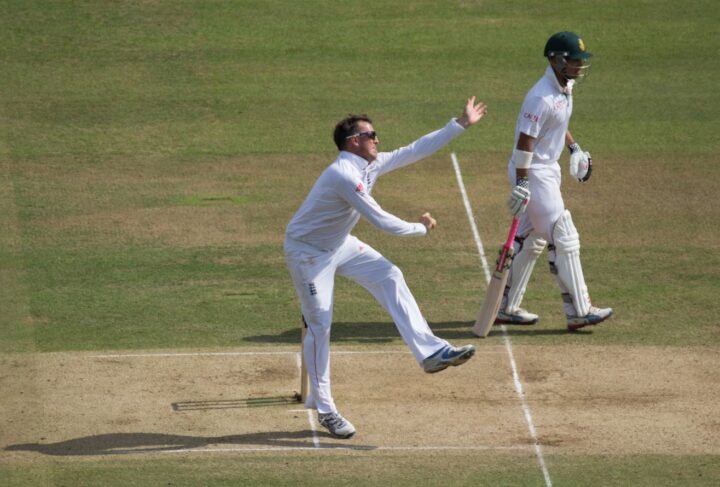Australian cricket is in the midst of one of its greatest ever peaks. With a team that includes their greatest ever since the Don, a record-breaking bowling attack and a host of world-class supporting acts, they seem as well set as any to compete in India. So will this series be a classic that goes down to the wire? I make the case that Australian cricket should prepare for their sternest challenge yet.
India is without question the hardest place to win Test matches in the world. The home sides record beggar’s belief, winning 15 test series in a row in a period stretching back over 10 years. They have only lost 2 Test matches at home in that time.
The problem for touring nations has been compounded in recent times with a bigger push from the BCCI for curators to produce spin friendly wickets. Off the back of England’s shock first Test win in 2021, India made the conscious effort to manufacture conditions that would greatly favour their formidable 3 pronged spin attack.
Still fit and firing, Jadeja and Ashwin are equally expert at tormenting top order batsmen and a perfect double act accounting for slow left arm and off spin. Newcomer Axar Patel has become a fixture in the side during their sub continental arrangements, and is arguably the biggest threat on assistive surfaces. Australian bowling stocks simply do not compare in these conditions.
The tourists will of course have an overwhelmingly strong battery of fast bowlers to call upon when required, led by captain Pat Cummins. But if Australia want a realistic chance of taking 20 wickets without chasing an eye-watering 4th innings target, the focus must move to a spin led attack. This is without doubt the weakest weapon in the armoury of Australian cricket.
Although Nathan Lyon remains the greatest Australian spinner of his generation, and possibly the greatest Australian off spinner of all time, his exceptional returns have led to an over reliance on his abilities. Their wider red ball spinning stocks are massively undercooked in terms of Test exposure – a flaw that could prove fatal for a tour that demands 2 or even 3 high quality options.
Picked in the squad are Ashton Agar and Mitchell Swepson (9 Tests between them) along with the form bowler in Sheffield Shield cricket, Todd Murphy. With Agar selected in Australia’s last Test, and his ability to bat, he may well get the nod to accompany Lyon and provide much needed team balance. But his red ball numbers do not make for pleasant reading: he’s been white ball focused for years now, and he may fail to trouble the opposition even on the most generous of surfaces.
Swepson offers variety as a leg spinner, but having fallen out of favour in the Test arena due to disappointing second Tests against both Pakistan and Sri Lanka, he failed to shine in the Shield. Todd Murphy, could well make his debut. He bowls the ball fast and brings the stumps into play, which are two necessary assets in this part of the world.
However, a tour away to India is a baptism of fire like no other for a spin bowler. There will be no room for ordinary sessions due to first Test nerves. Even Nathan Lyon, who will be essential to any chance Australia have of regaining the Border-Gavaskar trophy, will have psychological demons to overcome having been dismantled by this opposition 2 years ago at home – statistically his worst ever series of four Tests or more with the ball.
Finding a way to accumulate runs on these testing surfaces has been as key to India’s success, and Australia must devise a plan to outscore them. The spine of their team has without question revolved around Marnus Labuschagne and Steve Smith. Smith has been the dominant red ball force of the last 10 years, and with his pandemic slump seemingly behind him, this could be the start of a big year for him as preparations for the Ashes intensify.
However, although Smith’s numbers in the sub-continent remain outstanding, he has in the past had well documented struggles against sub continental left arm spin. There can be no greater challenge in world cricket for him than Axar Patel and Jadeja on turning wickets, who will undoubtedly target him LBW. Should he find a way of scoring runs in even these conditions, he would perhaps set in stone his reputation as the greatest ever since Bradman.
With regards to his understudy – although this moniker feels outdated considering how far Marnus has largely outshone Smith since 2019 – this is a massive tour for Labuschagne. Though he has rightly garnered international acclaim for his superhuman greed for Test runs, the criticism that almost all of his significant work has been done at home on flat Australian wickets is not unfounded – he averages just shy of half his home average, overseas.
If Marnus wants to be placed in the same conversation as the ‘Fab 4’, as could happen, he not only needs to continue his exploits for many a year longer; his weight of runs away from home must increase. There would be no better place to start than Nagpur.
Aside from these two, Australia retains the asset of Usman Khawaja as their premium sub-continent specialist. For Australia to compete, he may have to compensate for players like David Warner and Travis Head, whose strengths remain dismantling pace bowling on bouncy wickets. Indian conditions couldn’t be more hostile to their particular skill-set.
Overall, blighted with fundamentally rotten spinning stocks that have been covered up by one of the all-time greats, Australia will struggle to pose India a significant threat. The exciting domestic season of a new offie, Todd Murphy, offers some signs of comfort, but it would be an enormous call to place him in the firing line against a collection of the most assured players of spin bowling on the planet.
One suspects that Australia might yet fall into the trap of opting for a pace prominent bowling attack, as many a SENA team has done in the past (sorry for Ahmedabad reminders). The temptation is no doubt even more seductive when one considers the quality of the pacemen they have on offer. But, unless we see a trend change, spin will be the prevailing threat in these conditions.
For obvious reasons, therefore, in terms of both bowling and batting on spinning pitches, India have every advantage. Australia, with one eye on the Ashes, simply aren’t the team to crack the almost impenetrable Indian fortress. To do so will take years of planning, months of blooding talented young tweakers, and ambitious batsmen who are both headstrong in the conviction of their defence whilst also in possession of several attacking options against slow bowling.
Devon Nostrand









Yes I couldn’t agree more with Devon’s excellent piece. But I think it will be a close series, and more mouth watering than England vs Bangladesh or dare I say England vs NZ!
Lyon’s method relies greatly on bounce and so he’s teneded to be less effective on Asian wickets. India also aren’t stacked with LHBs.
Whoever gets the second spinner berth hopefully has a better fate than the last incumbent, SNJOK. He took 14/70 (7/35 in each innings – the best repeated figures in Test history) then promptly disappeared for reasons I’ve never quite understood (not that I followed it that closely).
And a Test century for Gary Ballance!??!….
What’s your evidence for the Lyon point? His record in India and Sri Lanka seems to be pretty much in line with his record in England and Australia (and his overall career figures), and his two tests in Bangladesh were very successful. The only country he has a poor away record against (other than South Africa) is Pakistan–anbd that’s partly because the pitches they offered up there last year were a bowlers’ graveyard.
The predictions seem to be Murphy will play so with Head as well that means 3 offies- overkill?
I watched a bit of the last test versus SA and Agar was all over the place- result of just playing T20 for 5years pretty much. Swepson seems unlikely to trouble the Indians much either. Zampa is probably the best of their white ball “specialists”
Boland and Cummins will have to bowl long spells and hammer a length in the hope to get a bit of bounce at least.
Whoever the Aussies play they seem to be at the very least competitive. It doesn’t seem to matter who plays enough of them raise their game to be a threat. It’s something in the DNA of their sportsmen. You never write them off. On the other hand if things start to go pear shaped the Indians may fold, though they are pretty professional now too and with a larger playing pool to choose from than any other country.
Interesting reports of selective pitch preparation by India – rough and dry outside the left handers’ off stump at both ends but miraculously watered and rolled outside the right handers’ off stump at both ends. Almost as if the visiting side has a lot of left handers in its lineup.
Oh good – another series that might have been worth watching looks like it’s going to be ruined by the home side stacking the deck. Nobody can complain at the ICC because they all want to do the same.
Neutral groundsmen? Away win bonuses? I’m not sure what the solution is but something needs to happen….
Well picking Renshaw ahead of Head as a specialist at playing spin didnt work out too well…..
Would probably of been better of playing Agar ahead of Boland as he has only bowled 3 overs so far. Can’t see pace playing too big a role in this match.
Good piece, some very solid points and arguments.
Thos tour should help relativise ENG’s 2011 collapse.
Lyon is a wicket-taker, no question – but a real baptism of fire for Murphy….and his 6 7 FC games.
Bo;and seemed to have bowled well. He will be a threat in the Ashes.
Let’ see how ENG go in NZ……..the Ashes might be pretty even again – especially give Archer’s return
Another three day Test…. another undercooked visiting team…. another visiting team rocks up missing key players (Head, Starc, Hazlewood)….
Rinse and repeat.
Just to point out that India were missing the same number of key players as Australia. That’s not a visiting team issue, it’s a packed scheduling issue–or simply bad luck, “one of those things”.
The undercooked-ness is another example of how national governing bodies see their own franchise competitions as more important than success for their test and.or ODI teams. Although, as Andrew McDonald said, it might have been better to practise for this match on a made-to-order scuffed-up pitch in Sydney than risk their hosts preparing a green seamer and sending out a team of Ranji Trophy rejects.
Ban this troll.
AUS have BIG problems.
Discuss.